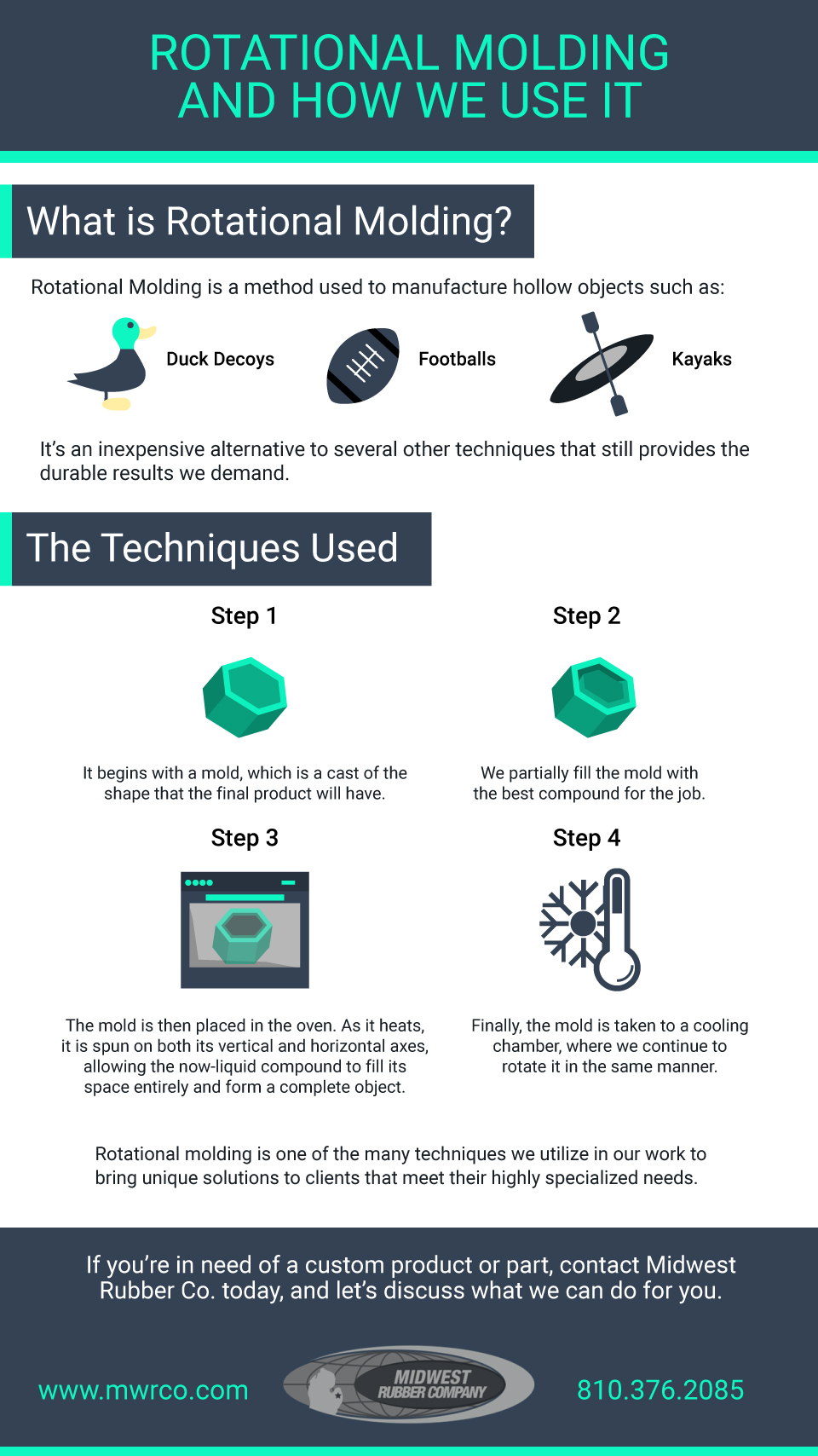
ROTATIONAL MOLDING
Rotational molding is one of our usual processes for creating hollow objects. While there are several different techniques that can be used to that end, rotational molding (also known as rotocasting or rotomolding) is one of the most cost-efficient, yet still provides a durable end product. As with all our processes, it starts off with a form, which is then partially filled with the selected material for the project, often plastisol or polyethylene. Initially, the material will either be a liquid or tiny flakes. When the form is subjected to heat, the compound melts and begins spreading. Here’s where the “rotational” part comes in: while in the oven, the form is spun vertically and horizontally, which ensures that the material melts evenly and fully coats the form. The spinning process continues while the form is cooled, after which the completed object is removed.
What are the advantages of rotational molding?
- Financial savings. Rotational molding can create the same objects as other methods, like blow molding, but at a lower cost. Midwest Rubber Company can then pass these savings on to our clients.
- Ease. As you’ve read, this technique is a simple process, and we’ve worked to perfect it.
- Flexibility. At Midwest Rubber Company, we embrace customization and will design a unique solution to meet your needs, using the right form and material.
What have we produced using rotational molding?
If you’d like to know more about this molding technique and how it could be used in your project, or have any questions about our other techniques, we invite you to contact us.